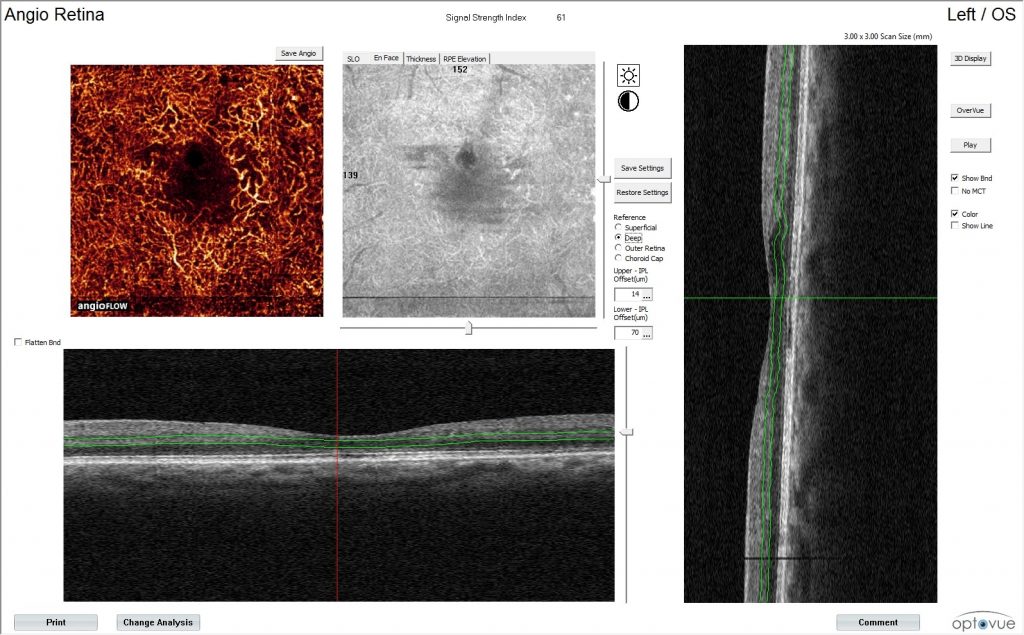OCTA could be a non-invasive and cost-effective test for early diagnosis already in the pre-clinical phase of the disease.
Alzheimer's disease is a complex, severely debilitating neurological disorder, characterised by a slow and progressive onset, which may already present premonitory signs in the ocular phase.
A research team from Washington University in St Louis, Missouri carried out a study to check whether individuals with positive biomarkers for the pre-clinical phase of Alzheimer's disease show retinal microvascular changes detectable on Optical Coherence Tomographic Angiography (OCTA), which are absent in individuals with negative biomarkers.
The case-control study included 58 eyes of 30 participants recruited from a single centre, the Charles F. and Joanne Knight Alzheimer's Disease Research Center in St Louis, Missouri, undergoing observation from 1 July 2016 to 30 September 2017. All participants were found to be cognitively normal based on the results of extensive neuro-psychometric testing and underwent positron emission tomography and/or cerebral spinal fluid examination to determine biomarker status.
Subjects positive for preclinical signs of Alzheimer's disease had an avascular foveal zone and a lower internal foveal thickness than subjects without the same preclinical signs.
Automated measurements of retinal nerve fibre layer thickness, ganglion cell layer thickness, inner and outer foveal thickness, vascular density, macular volume, foveal avascular zone were performed with the OCTA system (OCT angiography).
Biomarker testing for asymptomatic, pre-clinical Alzheimer's disease is invasive and expensive.

OCTA, on the other hand, is a new non-invasive technique, without contrast medium, that captures the dynamic movement of erythrocytes, allowing 3D visualisation of the perfused vascular system and retinal microvascularisation, thus enabling analysis of retinal and microvascular anatomy.
As Dr. Rajendra S. Apte stated, the pilot study at the University of St Luis shows that changes in vascularisation and retinal thickness can be detected long before any evidence of cognitive decline.
Thus, prospective studies with larger cohorts of patients could be envisaged to support this diagnostic use of angio-OCT and also to determine the correlation between the progression of foveal avascular zone abnormalities and the onset of dementia.
Source
O'Bryhim B, Apte RS, Kung N et al. Retinal alterations noted in preclinical Alzheimer's disease JAMA Ophthalmol. 2018;doi:10.1001/jamaophthalmol.2018.3556
Dr. Carmelo Chines
Direttore responsabile
